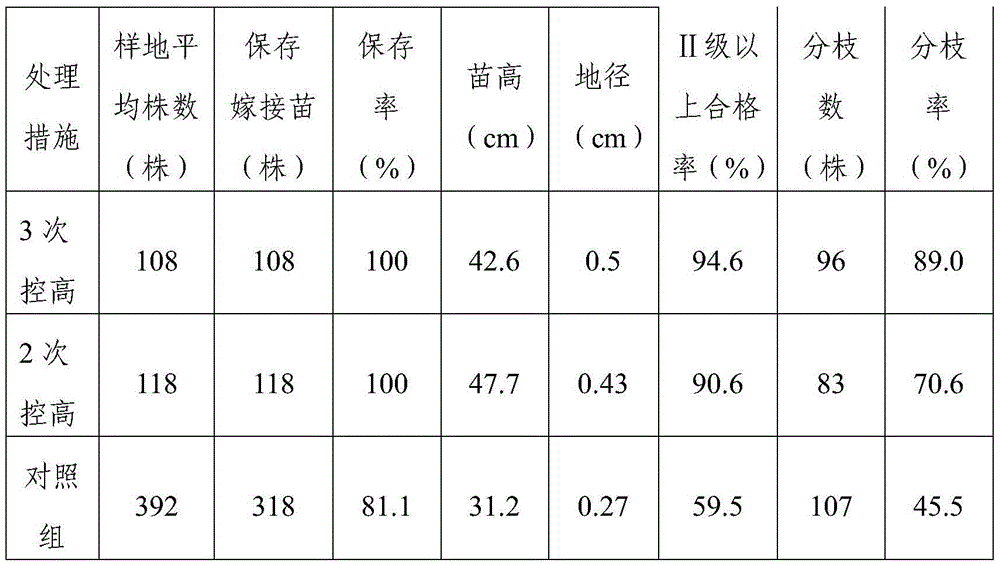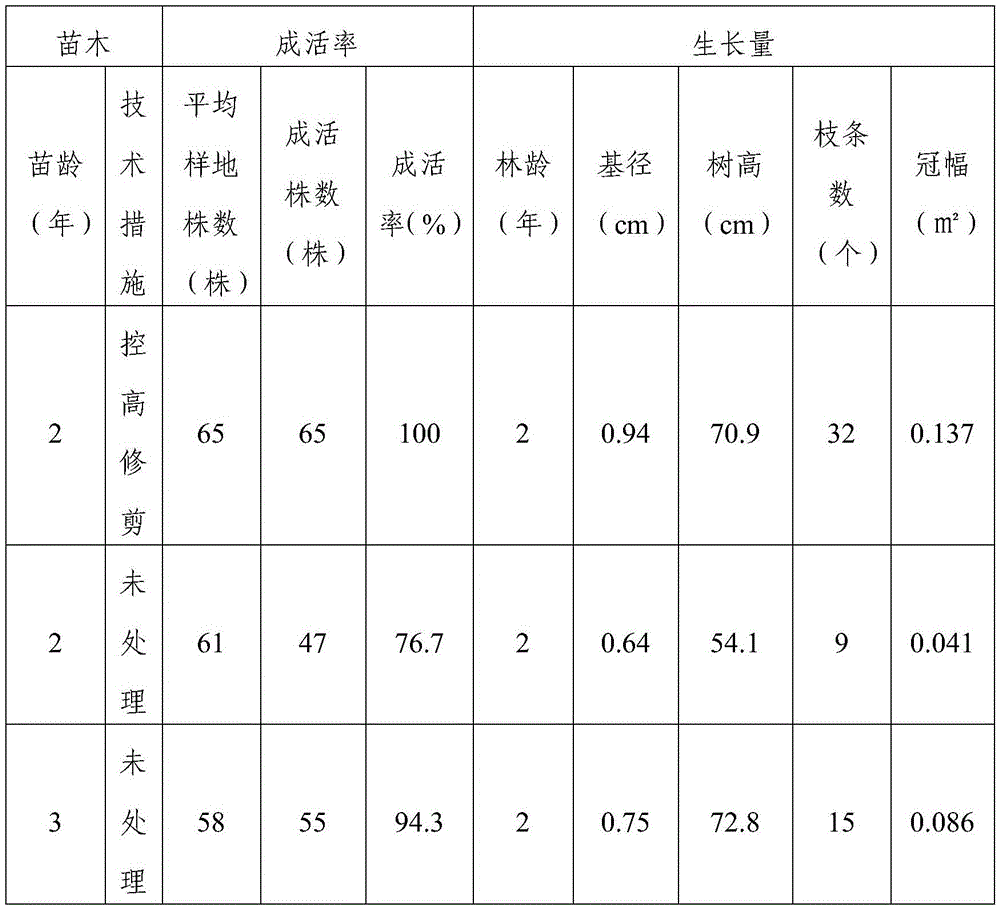A kind of cultivation method of Camellia oleifera dwarf multi-branched seedlings
A cultivation method and multi-branch technology, which is applied in the field of cultivation of camellia oleifera dwarf multi-branch seedlings, can solve the problems of less than 70% qualified rate of seedlings, low qualified rate of seedlings, and differences in tree structure differentiation, etc., so as to reduce growth and differentiation Differences, improve the pass rate of the nursery, and the effect of low production costs
- Summary
- Abstract
- Description
- Claims
- Application Information
AI Technical Summary
Problems solved by technology
Method used
Image
Examples
Embodiment 1
[0044] A method for cultivating Camellia oleifera dwarf multi-branched seedlings, comprising the steps of:
[0045] (1) Density control: adopt the conventional grafting seedling raising method to cultivate Camellia oleifera seedlings. After the seedlings grow into the 2nd instar stage, carry out the first seedling thinning before the spring germinates, that is, pull out the plants that have not germinated and are damaged by diseases and insect pests; when the seedlings enter the spring halfway After lignification, carry out the second thinning, remove dense weak plants, diseased and pest plants, mechanically damaged plants and oblique plants, and ensure that the growth space of a single seedling is 0.02m 2 , the spacing between plants is 15cm, and the yield of seedlings per mu is 20,000;
[0046] (2) Pruning and height control: pruning the Camellia oleifera seedlings of the 2nd age in three times, there are no obvious growth nodes in spring and summer, and the summer growth pe...
Embodiment 2
[0051] A method for cultivating Camellia oleifera dwarf multi-branched seedlings, comprising the steps of:
[0052] (1) Density control: adopt the conventional grafting seedling raising method to cultivate Camellia oleifera seedlings. After the seedlings grow into the 2nd instar stage, carry out the first seedling thinning before the spring germinates, that is, pull out the plants that have not germinated and are damaged by diseases and insect pests; when the seedlings enter the spring halfway After lignification, carry out the second thinning, and remove dense weak plants, diseased and pest plants, mechanically damaged plants and oblique plants, and ensure that the growth space of a single seedling is 0.025m 2 , the spacing between plants is 17cm, and the yield per mu is 18,000 seedlings;
[0053] (2) Pruning and height control: pruning the Camellia oleifera seedlings of the 2nd age in three times, there are no obvious growth nodes in spring and summer, and the summer growth ...
Embodiment 3
[0058] A method for cultivating Camellia oleifera dwarf multi-branched seedlings, comprising the steps of:
[0059] (1) Density control: adopt the conventional grafting seedling raising method to cultivate Camellia oleifera seedlings. After the seedlings grow into the 2nd instar stage, carry out the first seedling thinning before the spring germinates, that is, pull out the plants that have not germinated and are damaged by diseases and insect pests; when the seedlings enter the spring halfway After lignification, carry out the second thinning, remove dense weak plants, diseased and pest plants, mechanically damaged plants and oblique plants, and ensure that the growth space of a single seedling is 0.023m 2 , the spacing between plants is 16cm, and the yield of seedlings per mu is 19,000;
[0060] (2) Pruning and height control: pruning the Camellia oleifera seedlings of the 2nd age in three times, there are no obvious growth nodes in spring and summer, and the summer growth p...
PUM
 Login to View More
Login to View More Abstract
Description
Claims
Application Information
 Login to View More
Login to View More - R&D
- Intellectual Property
- Life Sciences
- Materials
- Tech Scout
- Unparalleled Data Quality
- Higher Quality Content
- 60% Fewer Hallucinations
Browse by: Latest US Patents, China's latest patents, Technical Efficacy Thesaurus, Application Domain, Technology Topic, Popular Technical Reports.
© 2025 PatSnap. All rights reserved.Legal|Privacy policy|Modern Slavery Act Transparency Statement|Sitemap|About US| Contact US: help@patsnap.com



